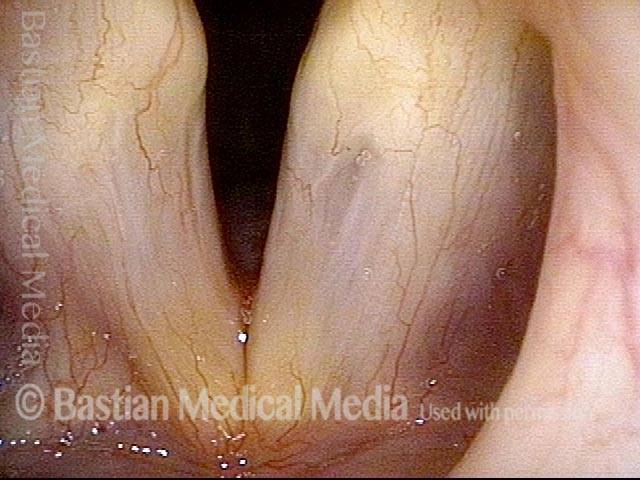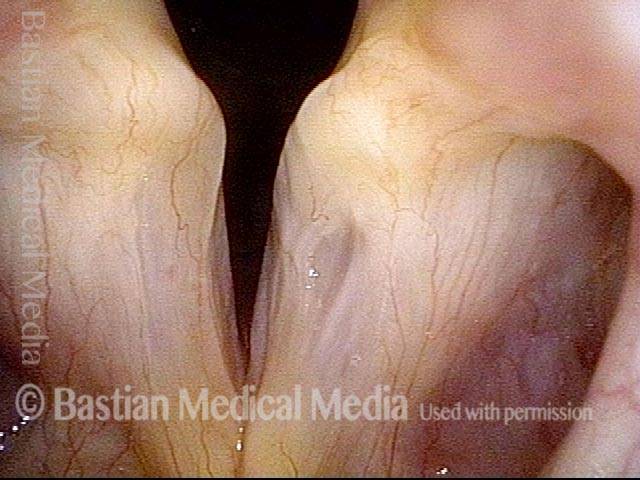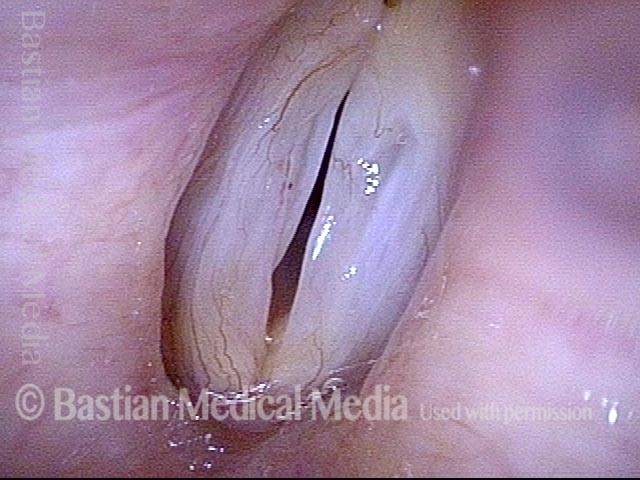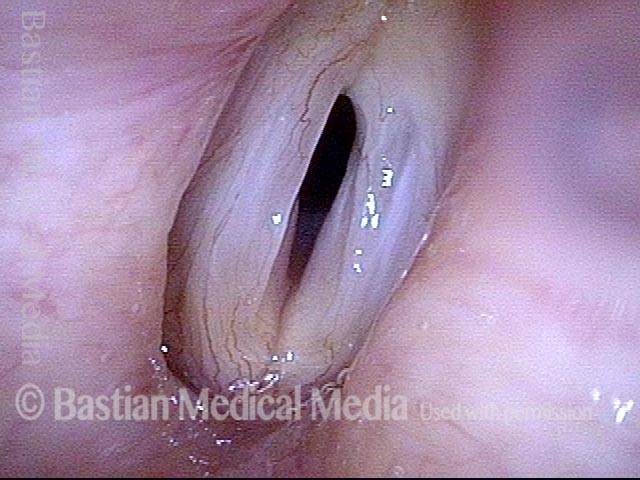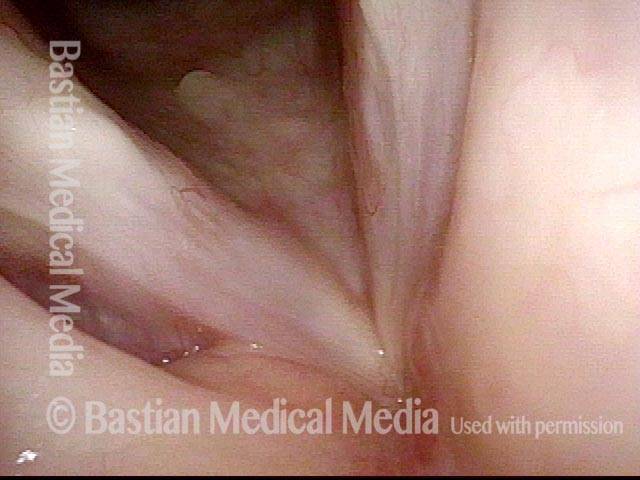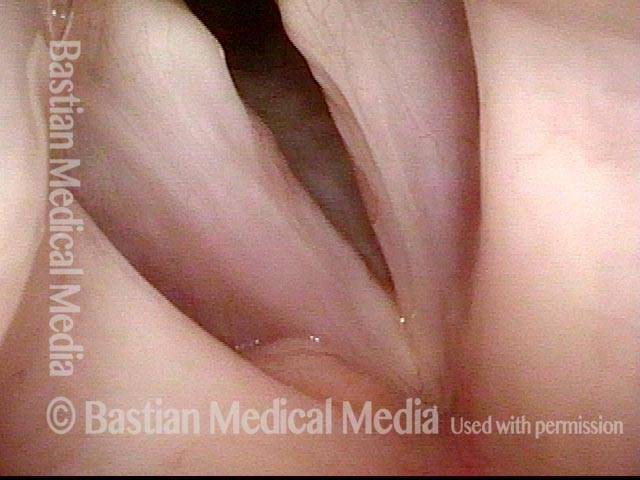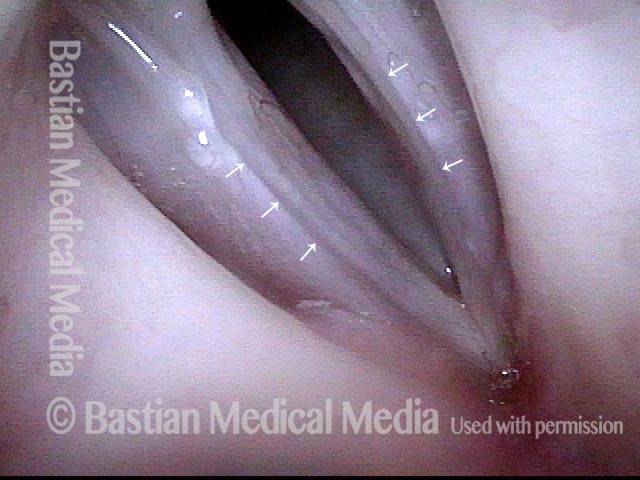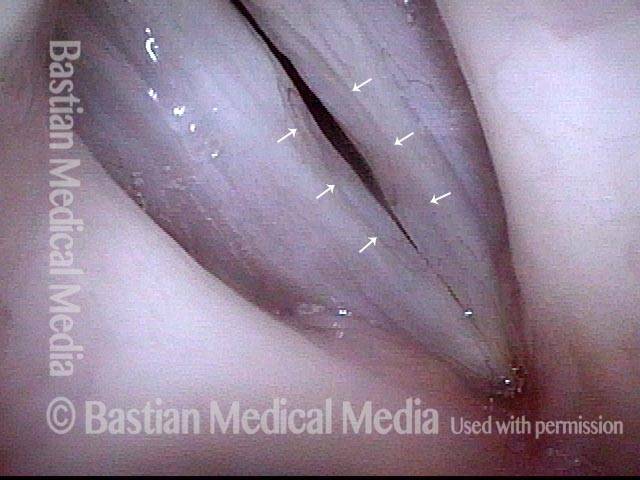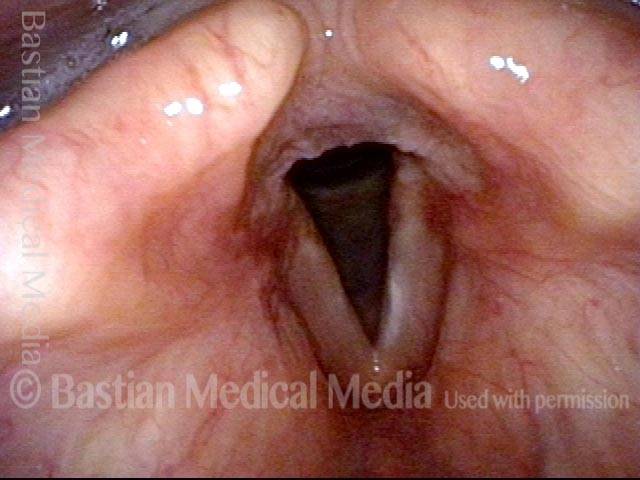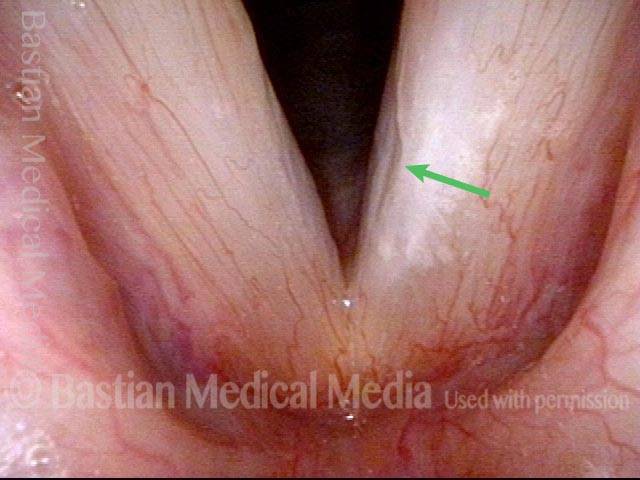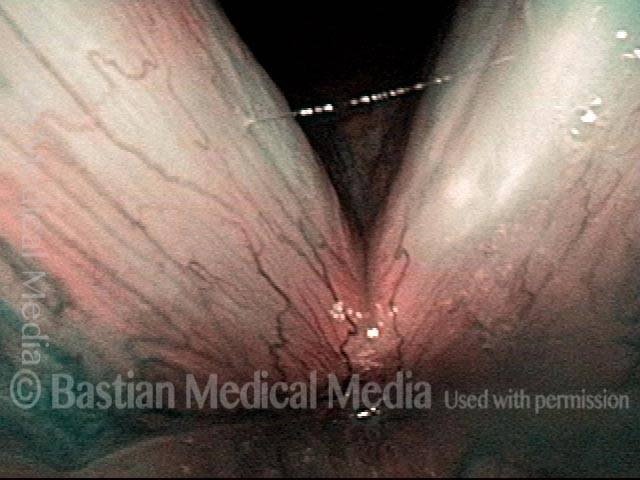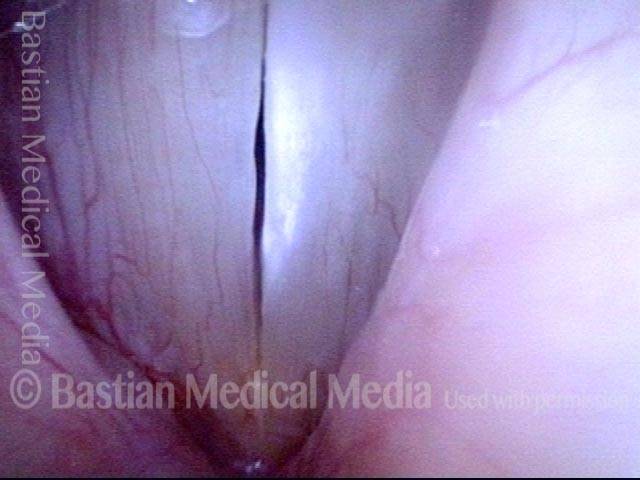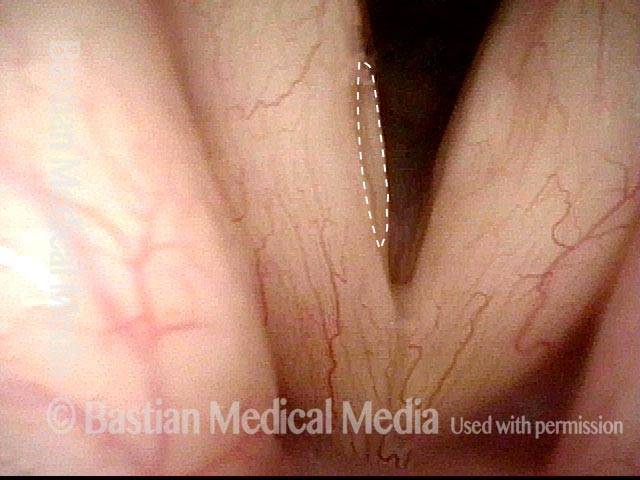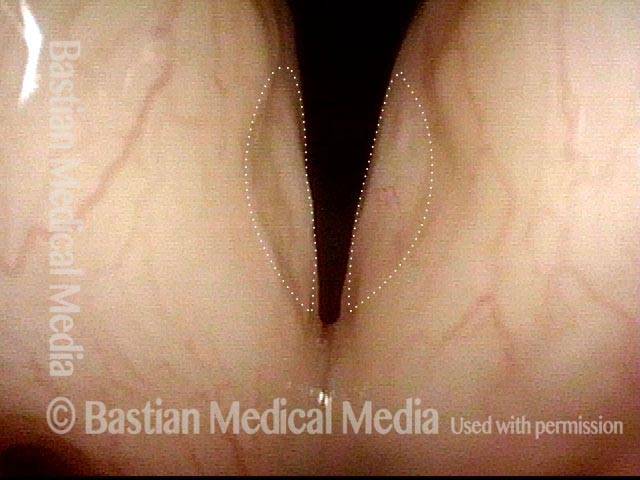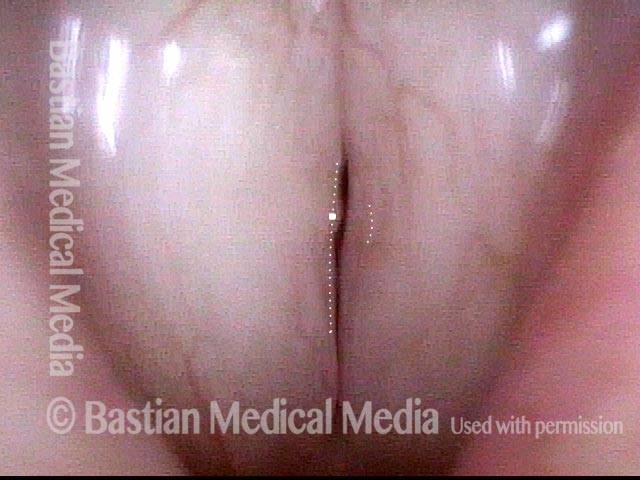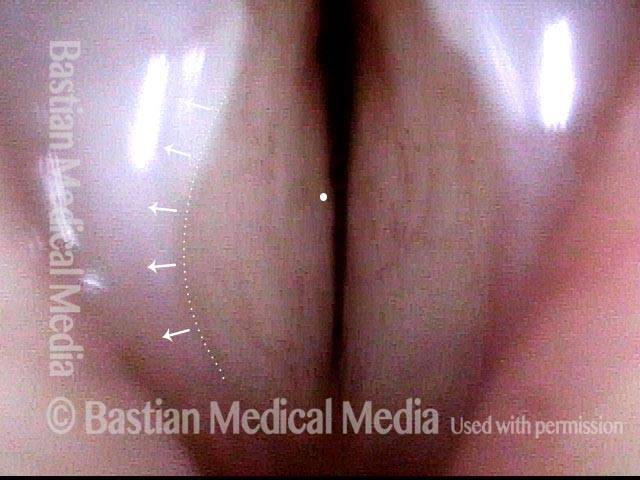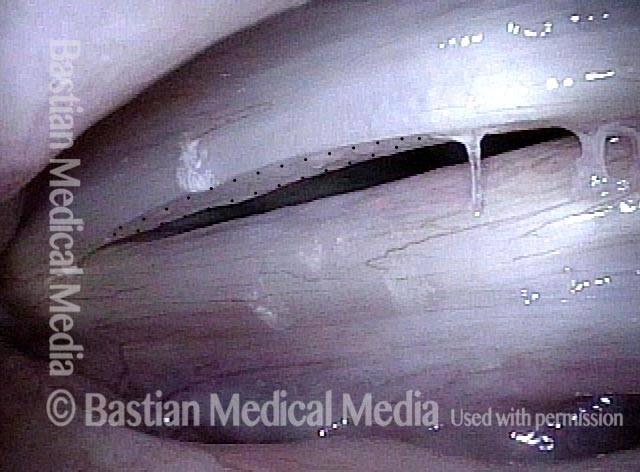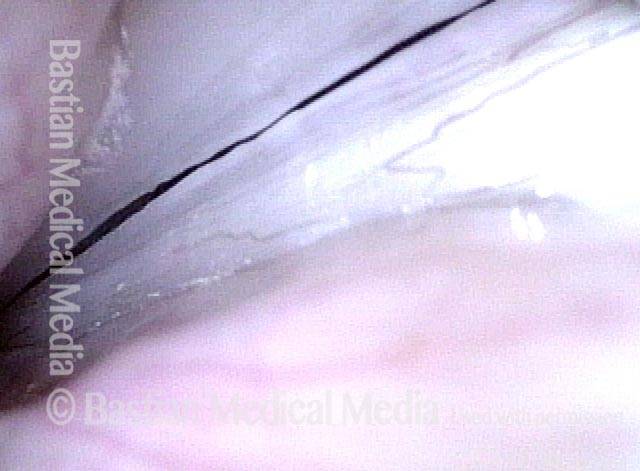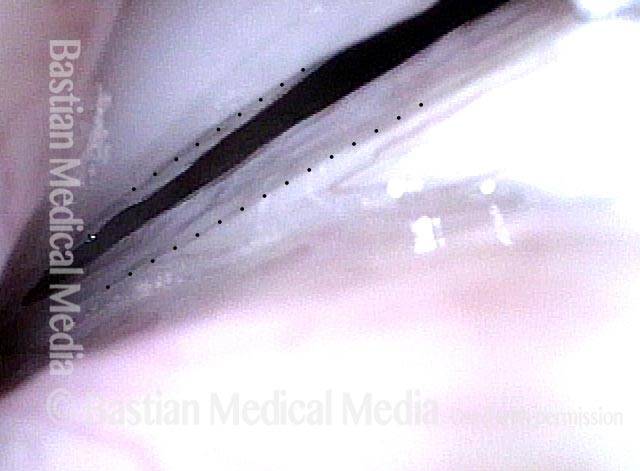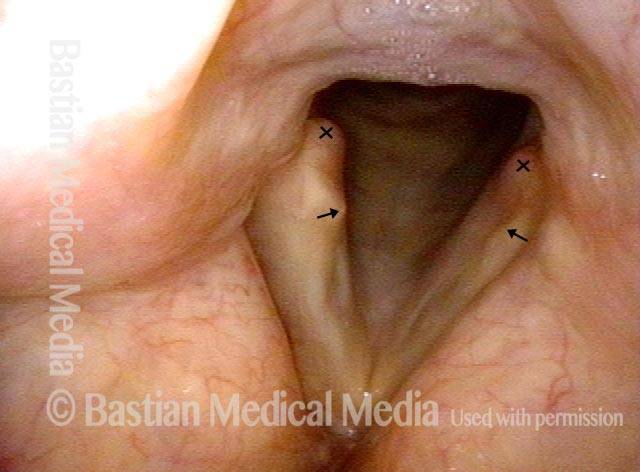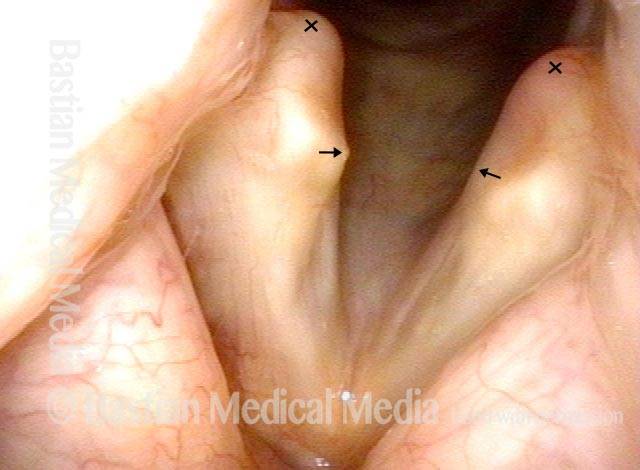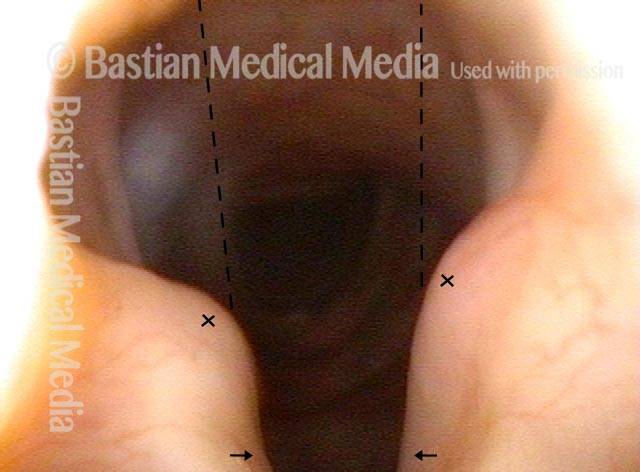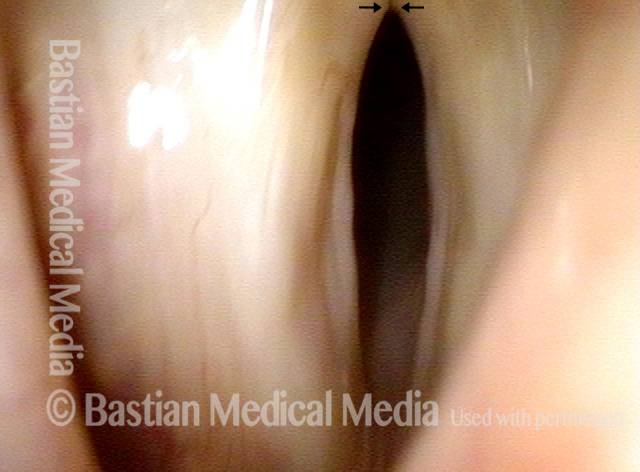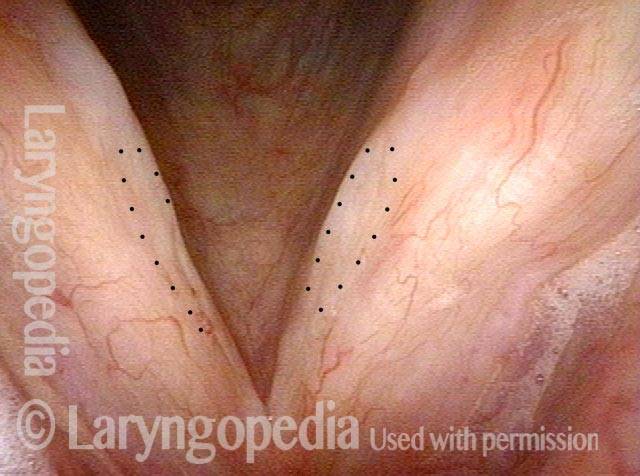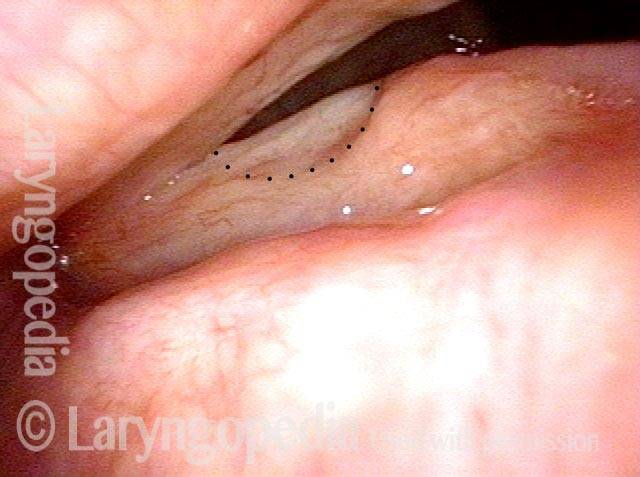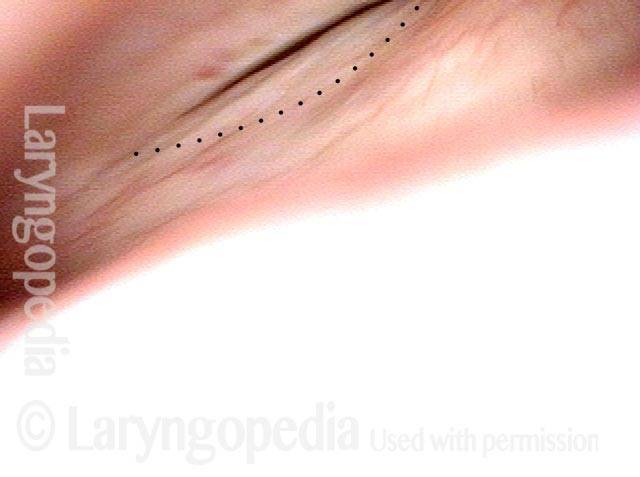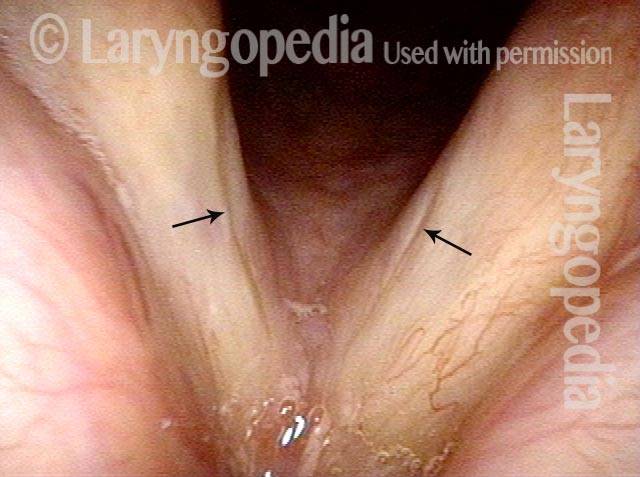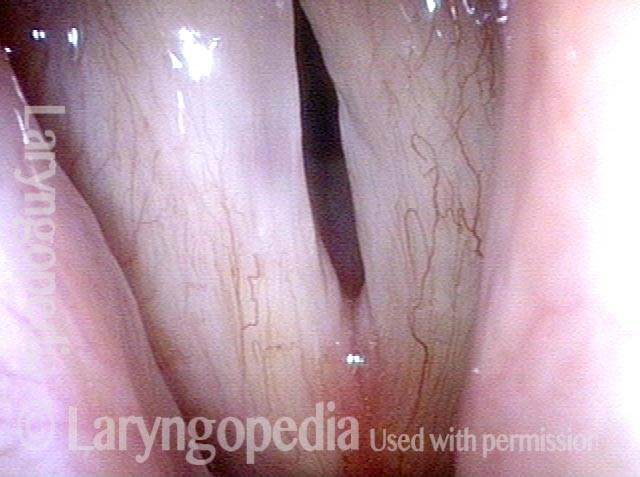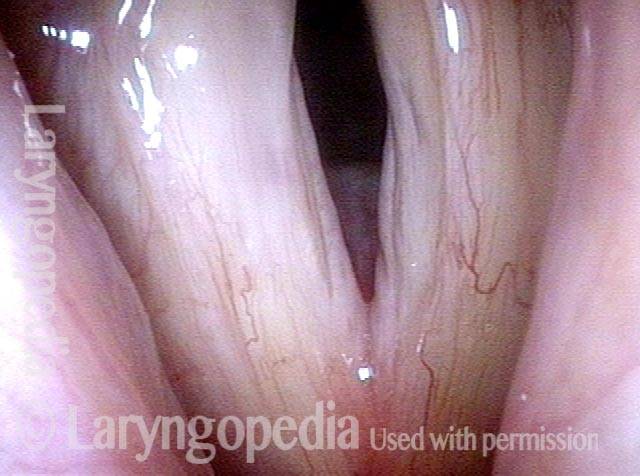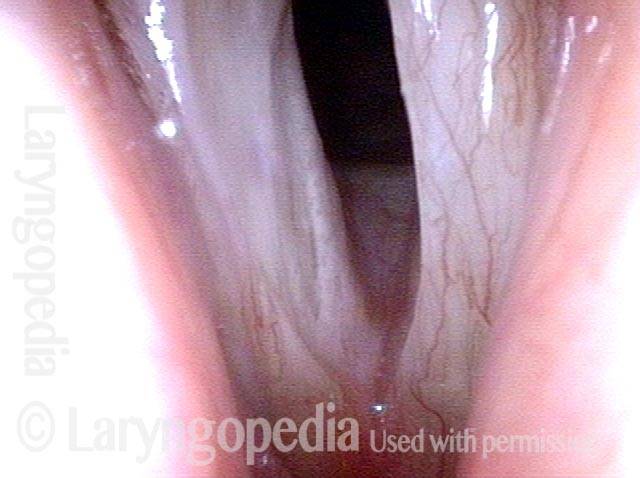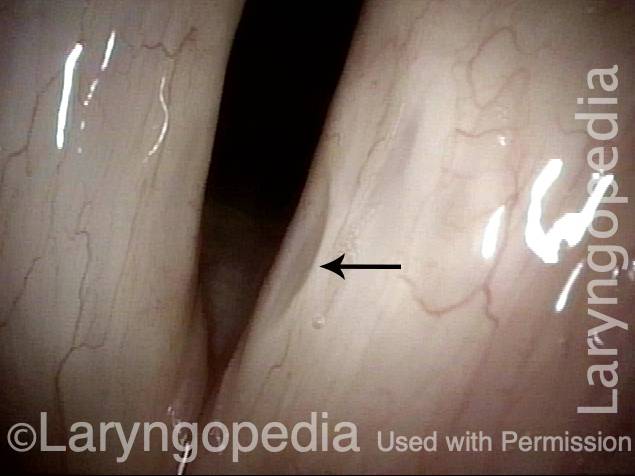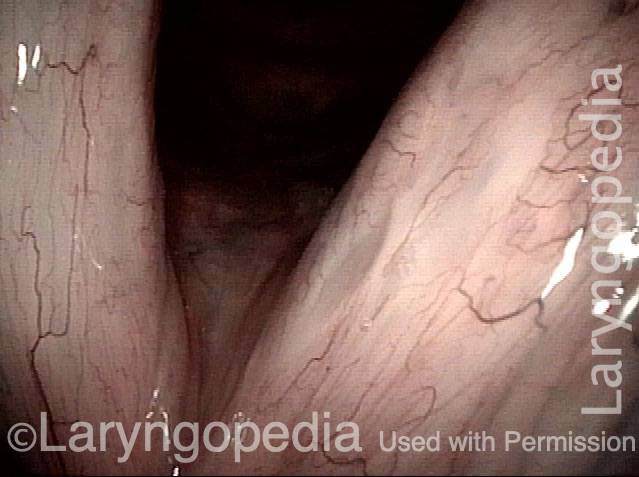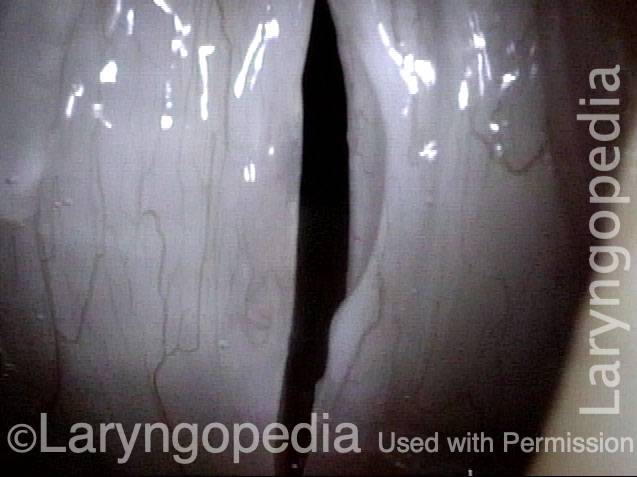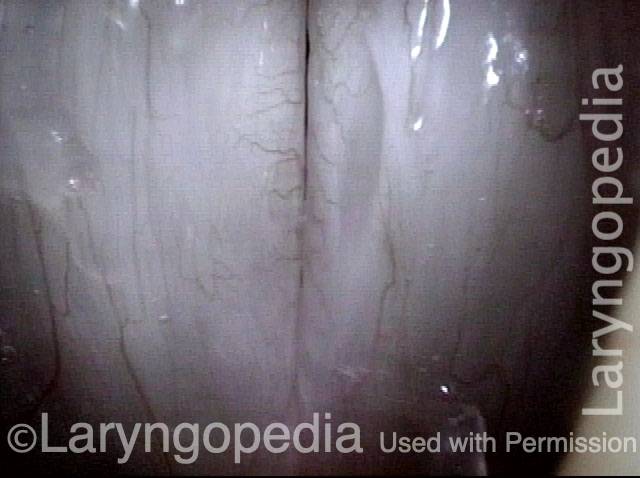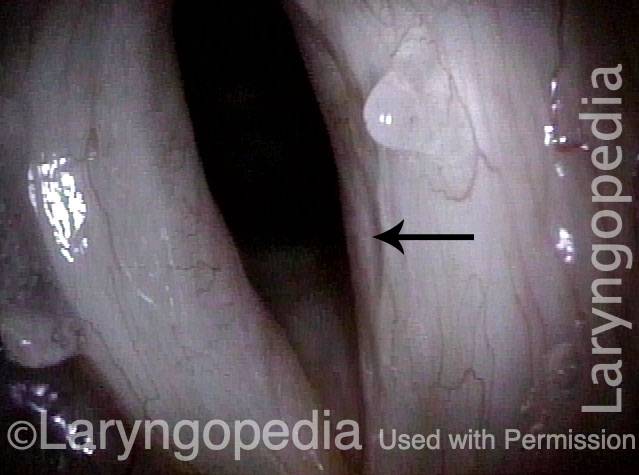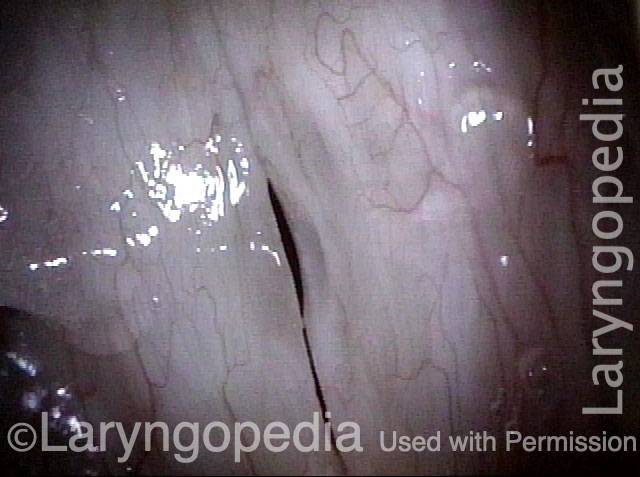Glottic furrow is a disorder in which a furrow or groove is seen on the vocal cord, running parallel to, and at or just below, the cord’s free margin. It normally represents a defect in the underlying vocal ligament. Often, the deepest part of the furrow is lined with epithelium that is attached directly to thinned vocal ligament. Pseudobowing (due to mucosal and ligament abnormality more than atrophic muscle) is also a common feature.
Glottic furrow vs. glottic sulcus
A furrow is to be distinguished from a sulcus, which is more a defect within the mucosal layer only, and is thought to represent the empty sac of what was formerly a cyst. A furrow is typically shallow, and its lips are apart; a sulcus is usually deeper, and its lips are in contact and therefore harder to see. A furrow normally adheres to the vocal ligament, and the apex or deep surface of a sulcus often does as well. However, in the case of a sulcus, the vocal ligament itself is normal. Also, in the case of a furrow, the mucosal layer—often only an epithelial layer, in fact—will tend to adhere more broadly to the ligament, due to loss of the Reinke’s space layer of the mucosa.
